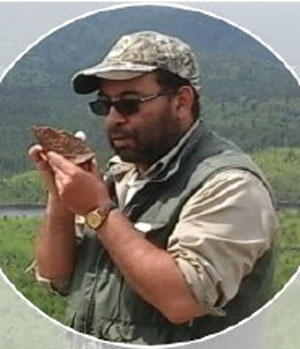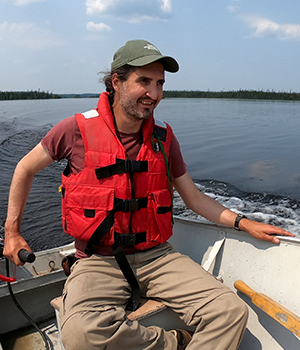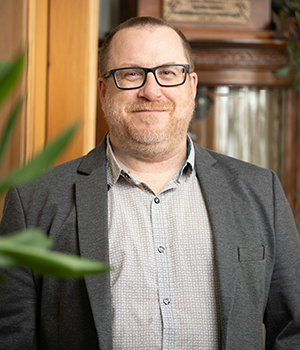The Grenville province offers a diverse geology and a wide variety of mineralization of interest. This session offers the opportunity to present the new results and advances of Géologie Québec as well as university and industry projects. The most recent results of the mapping campaign carried in the Grenville in summer 2024 will be presented.
Geological Discoveries in the Grenville Province: Mapping, Research and Exploration Advances
Thursday, November 20, 2025
Room 403 – Espace géoscientifique

9:05 a.m.
Geology, Geochemistry and Metallogeny of Rocks Between the Clova Area and Lake Saint-Jean

MRNF
The area between Clova and Lake Saint-Jean is lithologically very diverse, with a variety of volcano-sedimentary units and felsic, intermediate, mafic and ultramafic intrusions. These are all distributed within the Parautochthon and Allochthon domains of the Grenville Province.
The geochemical composition of these rocks has enabled the determination of their magmatic affiliation, the source of the magmas, and their tectonic setting in relation to their emplacement period. The trace element signatures of various magmatic rocks have contributed to a better understanding of orogenic events across the different geological periods from Neoarchean (>2.5 Ga) to pre-Labradorian (1.90 to 1.71 Ga) in the Parautochthon domain and from Labradorian to Post-Grenvillian (1.71 to 0.960 Ga) in the Allochthon domain. The tectonic settings interpreted during these geological periods are either magmatic arc settings or oceanic plate ruptures involving crustal extension phases.
Work in this study area has highlighted various metallogenic periods associated with a wide variety of substances of economic interest. Among these, rare earth element mineralizations, associated with granitic to syenitic pegmatite dykes, are the most abundant and are particularly characteristic of the Middle Grenville (1050 to 1018 Ma). Fe-Ti-P mineralizations are also significant and are mainly related to the mafic and ultramafic rocks of the Lac-Saint-Jean Anorthositic Suite, which were emplaced during the Adirondian (1180 to 1080 Ma).
9:35 a.m.
Innovative Concepts and Models for the Origin of Mantle-Derived alkaline Melts and Their Implications for Discovering New Mineralization Sites

Alkaline melts are defined as melts with high concentrations of alkali metals and rare earth elements. The metal endowment of these melts, particularly the rare earth elements, depends on specific thermal conditions and the chemical composition of their mantle sources. In North America, the Grenville Province represents one of the most significant hosts for alkaline magmatism, including within convergent margin settings associated with the Grenville orogeny (<1.1 Ga); however, the combination of source-related and non-source-related factors across the orogen remains unclear. Recently, an integrated approach combining petrology, geophysics, and modelling has led to the proposal of new models explaining the origin of world-class examples of alkaline melts in modern tectonic settings, highlighting the links between large-scale mantle processes and mineralization zones. Our initial investigations indicates that these new models can be applied to investigate metallogenic domains hosting alkaline rocks in the Grenville Province. This approach offers a novel way to trace the trajectories of potentially fertile melts for systematic exploration of critical minerals.
9:55 a.m.
Geology of the Coacoachou Lake Area, Grenville Province, Côte-Nord Region, Quebec, Canada

MRNF
This conference aims to present the new lithodemic subdivision of basement rocks in the area between the Étamamiou and Olomane rivers (northern edge of NTS sheet 12K01, sheet 12K08, and NW corner of sheet 12J05). The area displays intermediate to felsic intrusive rocks either emplaced or metamorphosed under upper amphibolite or granulite facies conditions.
The oldest rocks in the region belong to the Kegaska Intrusive Suite (∼1555 to 1530 Ma) composed of porphyritic and foliated granodiorite and monzogranite. This unit forms the basement of the La Romaine Complex (1508 ±14 Ma; Bonnet, 2009) consisting of kilometric lenses of paragneiss. Several of these lenses are also scattered in the Coacoachou Intrusive Suite, which comprises intermediate to felsic intrusive rocks containing biotite ± hornblende or biotite ± orthopyroxene. Gabbronorite, hypersthene diorite and mangerite dykes from the Blacklands Intrusive Suite cut the aforementioned units. The whole is cut by intermediate to felsic intrusive rocks belonging to different units of late Mesoproterozoic age, such as the Mantuh Intrusive Suite (∼1090 Ma), or apparently Neoproterozoic, such as the Wapitagun and Washicoutai Intrusive suites and the Mukanipan Intrusion.
The trajectory of the regional foliation reveals that the region is affected by complex folds. West of lakes à l'Ours and Coacoachou, the dominant orientation of the fold axial planes is approximately N-S, while to the east it is NE-SW. Large ductile shear zones of varying orientations cross the area.
10:15 a.m.
Break
10:30 a.m.
Geology of the Lake Poulin-De-Courval Area, Grenville Province, Saguenay–Lac-Saint-Jean region, Québec, Canada

MRNF
The Lake Poulin-De Courval area (NTS sheets 22D16 and 22D09) was the subject of a 1:50,000 scale geological survey during the summer of 2024. The crystalline basement of the mapped area, which is part of the Allochthon of the Grenville Province, consists of the Saguenay Gneissic Complex (1506 ±13 Ma) and the Tadoussac Intrusive Suite (1502 ±6 Ma). The rocks of the Saguenay Gneissic complex form klippes in the Cap à l'Est Gneissic Complex, which also contains some rocks from the Lac-Saint-Jean Anorthositic Suite. Numerous intrusions are injected into these lithodemic units: the Cap Trinité Mangerite, the Poulin-de-Courval Mangerite, the Vanel Anorthosite, the Mattawa Anorthosite and the Jocko Pluton. All these rocks are Mesoproterozoic in age and cut by granitic to syenitic pegmatite dykes. They have undergone several deformation phases and are cut by faults and shear zones, the most important of which is the NE-SW-trending Saint-Fulgence Shear Zone. The regional metamorphism is at the granulites facies. A sample of alkaline feldspar quartz syenite yielded REE showing values of up to 8431 ppm total REE, 1730 ppm Th and 4193 ppm Zr. Three showing values in Th and one in Nb were obtained from samples of syenogranite and alkali feldspar granite. A nelsonite sample yielded up to 37.92% Fe.
High-purity iron ore from the Fermont area has been added to the list of critical minerals. About 40 Mt of iron ore concentrate are produced in Quebec every year, worth 6 G$. This is 150% of the value of the gold produced in Abitibi! This iron ore is extracted from metataconites, which are the metamorphic equivalent of the Sokoman iron formation in the Labrador Trough. It consists of coarse-grain quartz, specularite and magnetite, which is easy to beneficiate into high-purity concentrates suitable for green steel production using electric arc furnaces. Such purity allows the reduction of smelting costs of high-purity alloy-free pig iron or steel. The purity premium confers economic viability to the projects, despite elevated production costs induced by remoteness, harsh climate and beneficiation costs. The iron formations hosting all the deposits are part of the Gagnon Terrane and stretch over 250 km, from Labrador to the east to the Manicouagan Reservoir to the west. This formation currently hosts five active mines (Mont Wright, Fire Lake and Bloom Lake in Quebec, plus Carol Lake and Scully in Labrador), one depleted mine (Lac Jeaninne), and multiple deposits yet to be developed. Aside from coarsening the ore, the Grenvillian orogeny induced folding and stacking of the formation into exploitable deposits.
11:10 a.m.
Nb-Ree Carbonatites from the Waswanipi-Saguenay Area, Grenville Province, Quebec, Canada

Carbonatites are associated with strategic resources for Quebec, particularly niobium (Nb) and rare earth elements (REE). High mineral potential for these substances has been identified in the central part of the Grenville Province (Moukhsil and El Bourki, 2023). Several mineralized zones in this area are currently being explored (e.g., the Crevier deposit in Lac-Saint-Jean; Groulier et al., 2020) or mined (Niobec mine in Saint-Honoré; Néron et al., 2018). Carbonatites interact with adjacent alkaline silicate rocks and generally contain late phases rich in iron, such as hematite or pyrite. The aim of this study is to gain a better understanding of the magmatic and hydrothermal mechanisms responsible for Nb and REE mineralization. The study focuses on field characterization, detailed petrography and geochemical analysis of certain mineral phases of interest. Nb mineralization (pyrochlore and/or columbite) is commonly associated with high phosphorus concentrations, which prompted an in-depth study of the geochemistry of apatite. The crystallization ages of apatite demonstrate the existence of several distinct magmatic and hydrothermal episodes. The deep lineament represented by the Waswanipi-Saguenay corridor, which is older than 1100 Ma, was reactivated several times following numerous tectonic events. This major transcrustal lineament enabled numerous carbonatitic and alkaline magmas to be brought up to the late Neoproterozoic (Saint-Honoré Carbonatite).
11:30 a.m.
